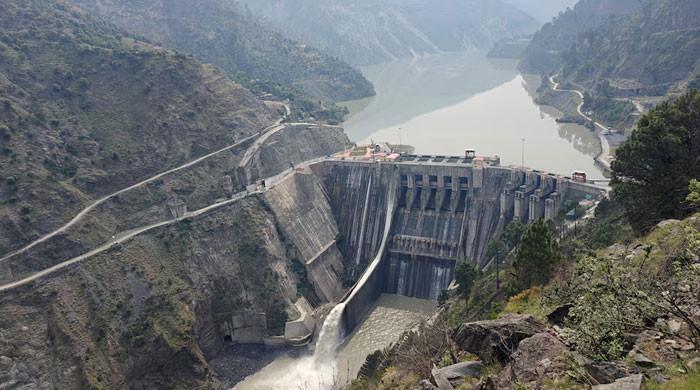The permanent court of arbitration (PCA) in The Hague rendered a historic judgment concerning the illegal participation of India pending by the Water Treaty of the Indus (IWT).
According to the last judgment, the Court of Arbitration concludes that it has “the responsibility continues to advance its procedure timely, fair and effective without regard to the position of India in matters of suspension, and that a non-compliance with this would be incompatible with its obligations under the Treaty”. Judgment is a spicy reprimand for India’s unilateralism, which has violated international law with impunity, assuming that its geopolitical position would protect it from international censorship.
The suspension of IWT India is the consequence of a foreign policy motivated by ideological height and misery, which makes it incapable of assessing the negative benefits of its heat and its contempt for international law. The IWT is a robust river sharing mechanism that has endured even through the past wars between the two countries. However, since the government of the BJP obsessed with the ideological came to power in India, it regularly tried to undermine the international legal framework which supports peace and stability in the region.
Stock tactics in the trade in India, such as false flag operations and the rejection of SPI commitments, represent a clear and present danger for regional peace. The strangulation of the flows of the Pakistani river, as well as the desertification which results from its agricultural land, was a recurring theme in anti-Pakistani rhetoric of the BJP government.
The confusion of terrorism with the denial of the river led to incendiary declarations such as “blood and water cannot flow together” by Prime Minister Modi. This declaration serves as a real plan for Indian water aggression against a lower resident state.
In the pursuit of the above objective, India has embarked on a strategy to stifle the water flow from the three Western rivers attributed to Pakistan under TVI. To reach this end, he launched a campaign targeting the three Western rivers, in particular the Chenab river, on which India plans to build 60 dams.
India does not have a lot of leverage on the Industry river, because most of its share of water comes from the tributaries located inside Pakistan. The Chenab, however, is the most vulnerable river, because it comes and goes through the Himachal Pradesh and Jammu, where India has space to build dams.
The IWT allows India to use water from Western rivers (up to 3.6 million water storage acres) for non-consuming purposes such as agriculture, alcohol consumption and electricity production. Until now, India has not fully used the storage allowance of 3.6 MAF and has an electricity production capacity of 3,360 MW. However, it plans to improve this capacity at 12,000 MW. There are also controversial projects, such as the pre-partition ranged channel, whose length and capacity are doubled at 120 kilometers, which allows it to draw 150 cubic meters of water per second near Akhnur.
The dams on the Chenab make fears of Indian manipulation on the part of water allocated by Pakistan under the IWT. Already, during the lean season, the Chenab river flow is reduced from 7% to 10%, and Pakistan estimates that once all the dams upstream on the Chenab become operational, India could reduce the flow of the river from 10% to 15%.
The main bonding point between Pakistan and India is the design characteristics linked to the storage capacity of these hydroelectric projects. India argues that it needs design changes to allow the rinsing of the sediment of tanks in order to prolong their operational life. However, Pakistan argues that such changes must be strictly in accordance with annex D [Paragraph 8 to Article 2(d)] IWT, which describes eligible design features for river hydroelectric projects.
These parameters refer to the location of water entries under the level of dead storage, the placement of the bottom of the doors in the case of closed spills and the supply of turbines at the highest possible level, to ensure that the storage capacity does not exceed the eligible limits. According to the IWT, India is required to inform Pakistan of any proposed river project six months in advance. India is now trying to get out of this commitment.
In addition to the insistence of Pakistan on the reference disputes to the court of arbitration and the neutral expert in the cases of Ratle and Kishanganga, India cited four reasons “fundamental and unforeseen” – climate change, demographic changes, a commitment to clean energy and terrorism – for the maintenance of the CDE in terms of consumption. However, it does not honor its obligations of environmental or ecological preservation, as evidenced by the destruction of 70 acres of conifers forest for the Ratle project.
India is in violation of article 12 of the TVI, which stipulates that the treaty can only be terminated by a new ratified agreement between the two countries. It is also in violation of the Vienna Convention on the Law of Treaties (VCLT), which stipulates that a treaty can only be suspended in accordance with its own provisions (article 57), or if a part is found in the “material violation” of the treaty. India does not have the legal position to suspend the treaty or any evidence to prove that Pakistan has committed a significant violation.
Pakistan won the first round in the legal battle with the decision of the APC, and the next step should be to request a legal opinion from the International Court of Justice (ICJ), whether through the World Bank or the United Nations General Assembly.
The revocation by India of the Treaty threatens to create a precedent dangerous for global transfective conflicts, endangering many other congresses and water sharing agreements. Around the world, 153 countries share 286 cross -border rivers and 592 aquifers.
The IWT has long been an exemplary model of sharing the cross -border river, which the world needs more and more within the framework of the growing water shortage and the dismissal of India consults an existential threat to regional and global cross -border cooperation.
Warning: The points of view expressed in this play are the own writers and do not necessarily reflect the editorial policy of PK Press Club.TV.
The writer is a security and defense analyst. It can be reached: [email protected]
Originally published in the news




